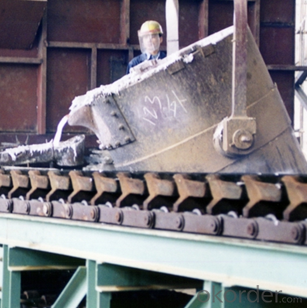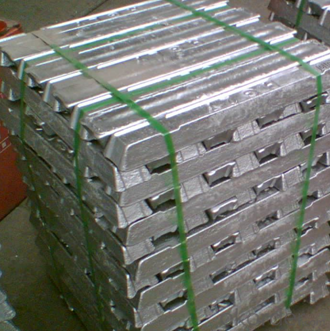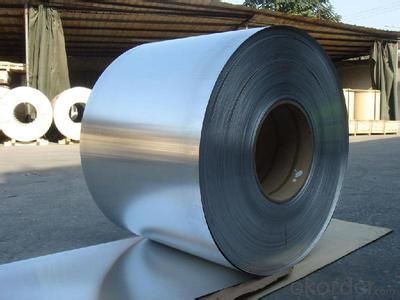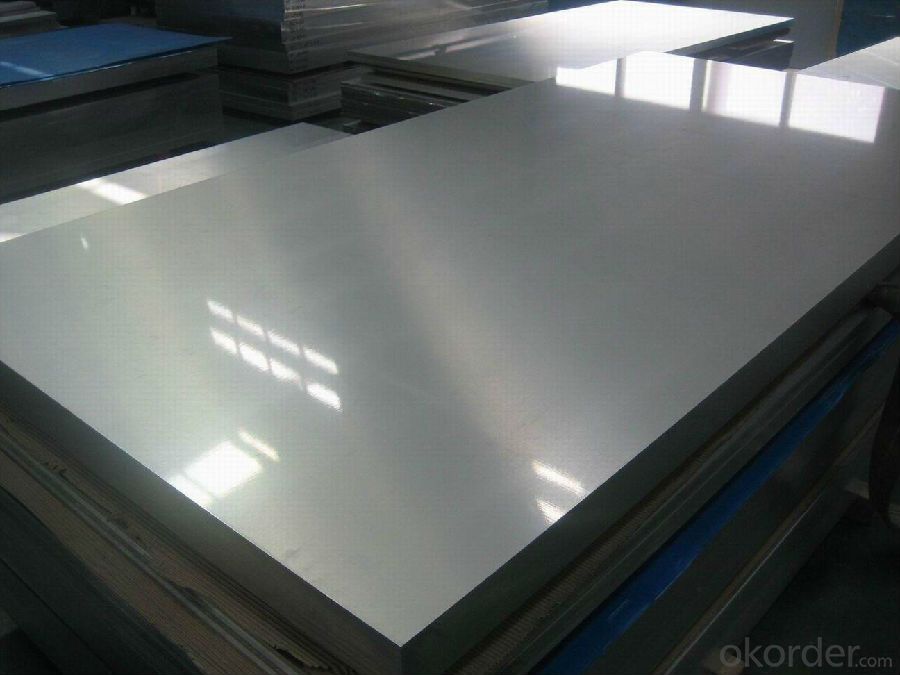Laminated Raw Aluminum Coil From China 3003 H14
- Loading Port:
- Shanghai
- Payment Terms:
- TT or LC
- Min Order Qty:
- 5 m.t.
- Supply Capability:
- 100000 m.t./month
OKorder Service Pledge
OKorder Financial Service
You Might Also Like
Laminated Raw Aluminum Coil (3003 H14)
Product Description:
Laminated Raw Aluminum Coil is designed for many fields such as electronics, instruments, lighting decoration, packing industry, and house decoration, curtain walls, honeycomb-core panel, sandwich panel, aluminum composite panel, aluminum composite pipe etc. Laminated Raw Aluminum Coil is hard and durable, even under the blazing sun. You can choose the right alloy for your habitation and we will do our best to meet your requests.
Product Features:
• Smooth surface
• High manufacturing accuracy
• High strength of extension and yield
• Well packaged
• No marks, no scratch, no excessive oil
Product Applications:
Product Specifications:
Alloy: | AA1050, 1060, 1070, 1100, 3003, 3004, 3005, 3105, 5052, 5083, 5754, 8011, 8006 |
Temper: | H14, H16, H18, H22, H24, H26, H32, O/F |
Thickness: | 0.2-100mm |
Width: | 30mm-1700mm |
Product Images:
Production of Hojas/Laminas de Aluminio natural 3003 H14




FAQ:
Q1: Why buy Materials & Equipment from OKorder.com?
A1: All products offered by OKorder.com are carefully selected from China's most reliable manufacturing enterprises. Through its ISO certifications, OKorder.com adheres to the highest standards and a commitment to supply chain safety and customer satisfaction.
Q2: How do we guarantee the quality of our products?
A2: We have established an advanced quality management system which conducts strict quality tests at every step, from raw materials to the final product. At the same time, we provide extensive follow-up service assurances as required.
Aluminium Metal - The Highly Conductive Property
Aluminium metal is the most abundant in the earth's crust but found only in combination, chiefly as an ore called bauxite. It also occurs in gemstones such as topaz, garnet, ruby and sapphire. It is found combined in over 270 different minerals. The metal is highly conductive and has great thermal properties and these properties are used for the various needs of the industries. Aluminium is silvery-white in colour.
The metal is used in various industries like building and construction, power transmission lines, photoengraving plates, cookware and other consumer goods, tubes for ointments and pastes. Global production of aluminium in the year 2005 was 31.9 million tonnes. This comes after iron consumption that was 837.5 million tonnes in the same year.
Pure aluminium has a low tensile strength, but if they are processed with proper heat and mechanics, they can be the strongest metal. Alloys formed with copper, zinc, magnesium, manganese and silicon are used in various industries.
Aluminium metal is extensively used in transportation industry. The use in aircraft and automobiles are well-known. A wide range of household items ranging from cooking utensils to baseball bats and watches are made of aluminium and its alloys. The consumer electronics are enclosed in the shells made of aluminium as they would not add to the weight of the equipment. Aluminium is used for making drinking cans, foil wrappings, bottle tops and foil containers that are extensively used in food and beverage industry. This is more effective as the metal is non-toxic and aromaless.
Powdered aluminium is used in paint and also forms an essential ingredient of the pyrotechnics like solid rocket fuels. The combination of properties light weight and great strength makes it useful in construction industry like window, doors, street lighting poles and sailing ship masts.
The highly conductive property of the metal makes it ideal to be used in electrical transmission lines for power distribution, heat sinks for electronic appliances such as transistors and CPU. About 1 kilogram of aluminium conducts almost twice as much electricity as 1 kilogram of copper. However, use of aluminium in household wiring has been found to be hazardous. Due to its ductile nature and corrosion resistance, the metal is used for electrical applications like TV aerials, satellite dishes and is the standard base for bulbs.
Aluminium is a recyclable material and many products can be made from the old form. Even the silver helium balloons that are commonly seen in birthday parties are covered with a thin, evaporated coating of aluminium metal over the tough plastic.
- Q:What are the common surface defects or issues in aluminum coils?
- Some common surface defects or issues that can be found in aluminum coils include: 1. Scratches: These are visible marks on the surface of the coil caused by contact with abrasive materials or improper handling during production, transportation, or storage. 2. Streaks: Streaks are long, narrow lines or bands that appear on the surface of the coil. They are often caused by irregularities in the rolling process or the presence of impurities in the aluminum material. 3. Dents: Dents are localized depressions or deformations on the surface of the coil. They can occur due to mishandling, accidental impacts, or improper storage practices. 4. Corrosion: Aluminum is generally resistant to corrosion, but certain environmental conditions or exposure to corrosive agents can lead to the formation of oxide layers or pitting on the surface of the coil. 5. Edge cracks: These are cracks or fissures that occur along the edges of the coil. They can be caused by improper cutting or shearing techniques during the manufacturing process. 6. Surface roughness: Surface roughness refers to an uneven or bumpy texture on the surface of the coil. It can be a result of inadequate smoothing or finishing during the rolling or processing stages. 7. Oil stains: Oil stains are dark or discolored areas that appear on the surface of the coil. They can occur due to improper cleaning or lubrication during the production process. 8. Coil set: Coil set refers to the tendency of the coil to retain a curvature or shape after unwinding. It can be caused by stresses induced during rolling, coiling, or cooling, leading to a non-flat and uneven surface. 9. Roll marks: Roll marks are patterns or imprints left on the surface of the coil by the rolling mill or equipment. They can be caused by uneven pressure or improper alignment of the rolling tools. 10. Discoloration: Discoloration refers to changes in the color or appearance of the aluminum surface. It can occur due to exposure to high temperatures, chemical reactions, or oxidation. These surface defects or issues can negatively impact the appearance, quality, and performance of aluminum coils. Manufacturers and users should be aware of these defects and take appropriate measures to prevent or minimize their occurrence.
- Q:Are aluminum coils suitable for air conditioning systems?
- Yes, aluminum coils are suitable for air conditioning systems. Aluminum coils offer excellent heat transfer properties, durability, and resistance to corrosion, making them a popular choice in air conditioning systems. They are lightweight, efficient, and can withstand high-pressure applications, making them a reliable option for cooling and refrigeration purposes.
- Q:Can aluminum coils be used for electrical transformers?
- Yes, aluminum coils can be used for electrical transformers.
- Q:How are aluminum coils protected against mechanical damage?
- Aluminum coils are protected against mechanical damage through various methods such as applying protective coatings, using durable outer casings, employing edge guards, and ensuring proper handling during transportation and installation.
- Q:Aluminum is a transition metal, woudn't the stock naming system apply to this formula?
- Aluminum oxide is best represented as Al2O3. Hope that helps.
- Q:Can aluminum coils be used in food processing applications?
- Food processing applications can utilize aluminum coils, as they offer a range of advantages. Aluminum is a widely used and highly adaptable material in the food industry due to its various benefits. Aluminum coils are lightweight, durable, and possess excellent thermal conductivity, which makes them suitable for applications requiring efficient and uniform heat transfer. When it comes to food processing, aluminum coils are commonly employed in equipment such as heat exchangers, evaporators, and refrigeration units. These coils help to cool, heat, or maintain the temperature of different food products during their processing, storage, or transportation. The exceptional thermal conductivity of aluminum ensures that heat is evenly dispersed, thereby aiding in the preservation of food quality and flavor. Furthermore, aluminum is a non-toxic and non-reactive metal, meaning it has no adverse effects on the taste or composition of the processed food. It is also naturally resistant to corrosion, ensuring that the coils do not contaminate the food and can be easily cleaned and maintained. In addition, aluminum is an environmentally friendly and recyclable material, aligning with the increasing demand for sustainable practices in the food industry. Its lightweight nature also contributes to energy efficiency and reduced transportation expenses. In conclusion, aluminum coils are a reliable, efficient, and safe choice for food processing applications. They meet the strict requirements of the industry while ensuring the quality and safety of the processed food.
- Q:Are there any limitations on the surface treatment of aluminum coils?
- Yes, there are limitations on the surface treatment of aluminum coils. One limitation is the type of surface treatment that can be applied to aluminum coils. Aluminum coils can be treated with various surface finishes such as anodizing, painting, and powder coating. However, not all surface treatments are suitable for all applications. For example, anodizing is a durable and corrosion-resistant finish, but it may not be suitable for applications that require a specific color or design. Similarly, painting and powder coating can provide a wide range of colors and aesthetics, but they may not provide the same level of durability as anodizing. Another limitation is the size and shape of the aluminum coils. Surface treatment processes may have limitations in terms of the size and shape of the aluminum coils that can be treated. For example, anodizing is typically done in tanks or racks, which may have size restrictions. Similarly, painting and powder coating processes may require specific equipment or facilities that may not be able to accommodate large or irregularly shaped coils. Additionally, the condition of the aluminum surface can also impact the effectiveness of the surface treatment. Aluminum coils may have imperfections or surface defects that can affect the adhesion and durability of the surface treatment. Proper cleaning and preparation of the aluminum surface are essential to ensure the effectiveness of the surface treatment. In summary, while there are various surface treatments available for aluminum coils, there are limitations in terms of the type of treatment that can be applied, the size and shape of the coils, and the condition of the aluminum surface. It is important to consider these limitations and select the most suitable surface treatment based on the specific requirements and constraints of the application.
- Q:I need to write as many interesting facts as i can about aluminum for a thing for school, any help?
- it is a lighter metal . you can prepare many alloys with it
- Q:Is aluminum veneer the same as color coated aluminum coil?
- Not necessarily, but you may call it like this. Aluminum veneer is the panel processed by aluminum plant. It has different size and thickness according to customer’s requirements. Color coated aluminum coil has been coated through two processes of bake and roast, for example, the coil or sheet formed of the coating of cars.
- Q:If the aluminum coil is 220 kg, 0.3 thick and 500 wide, how much is the coil diameter?
- With the outer diameter and inner diameter, you can know the volume. With the density and volume, we can calculate the weight. And with weight, we can know the length.
1. Manufacturer Overview |
|
|---|---|
| Location | |
| Year Established | |
| Annual Output Value | |
| Main Markets | |
| Company Certifications | |
2. Manufacturer Certificates |
|
|---|---|
| a) Certification Name | |
| Range | |
| Reference | |
| Validity Period | |
3. Manufacturer Capability |
|
|---|---|
| a)Trade Capacity | |
| Nearest Port | |
| Export Percentage | |
| No.of Employees in Trade Department | |
| Language Spoken: | |
| b)Factory Information | |
| Factory Size: | |
| No. of Production Lines | |
| Contract Manufacturing | |
| Product Price Range | |
Send your message to us
Laminated Raw Aluminum Coil From China 3003 H14
- Loading Port:
- Shanghai
- Payment Terms:
- TT or LC
- Min Order Qty:
- 5 m.t.
- Supply Capability:
- 100000 m.t./month
OKorder Service Pledge
OKorder Financial Service
Similar products
New products
Hot products
Hot Searches
Related keywords






























